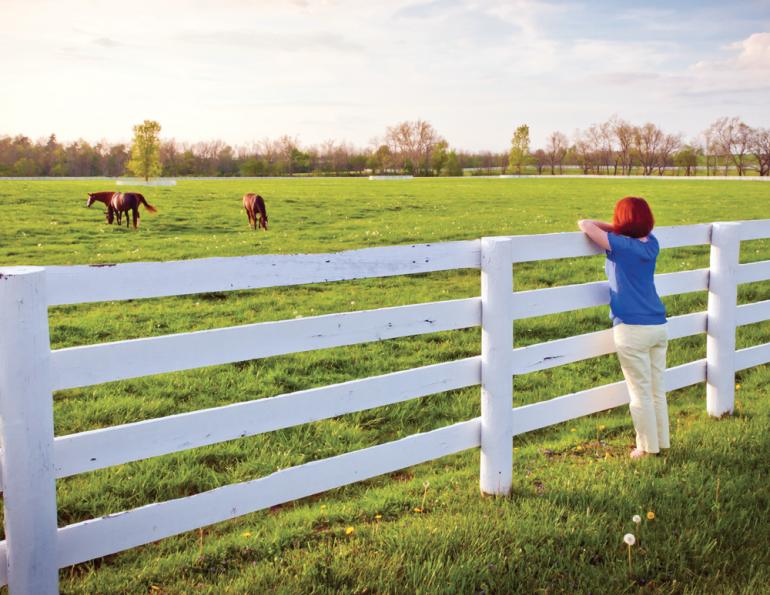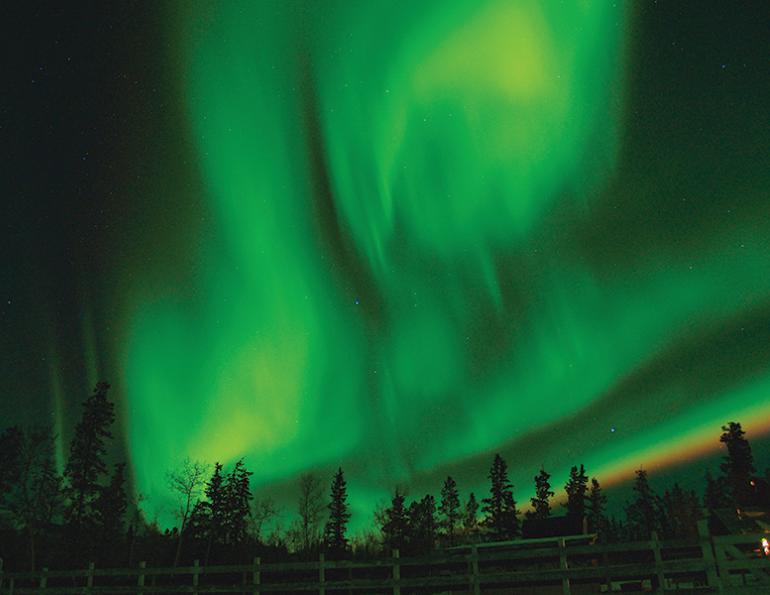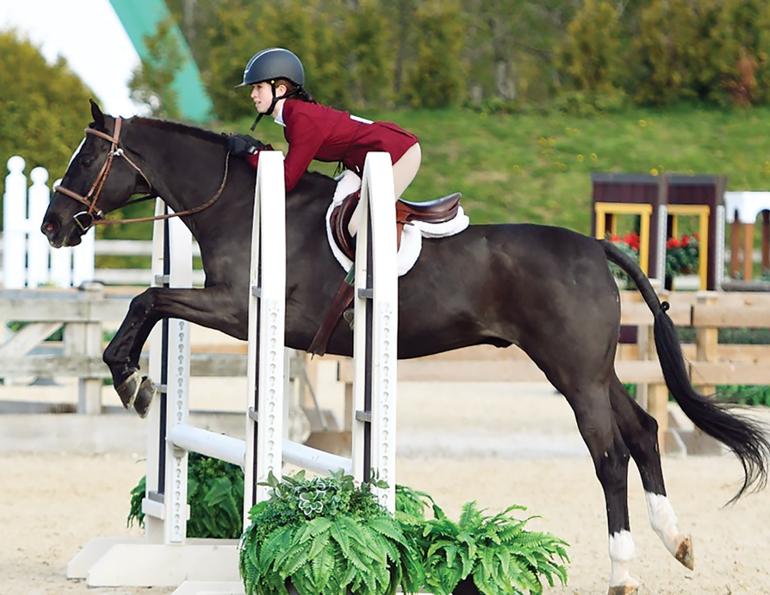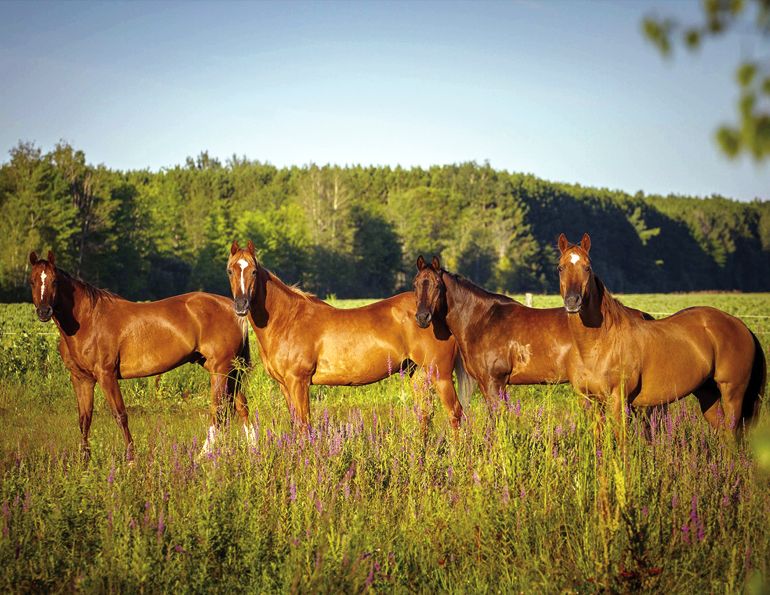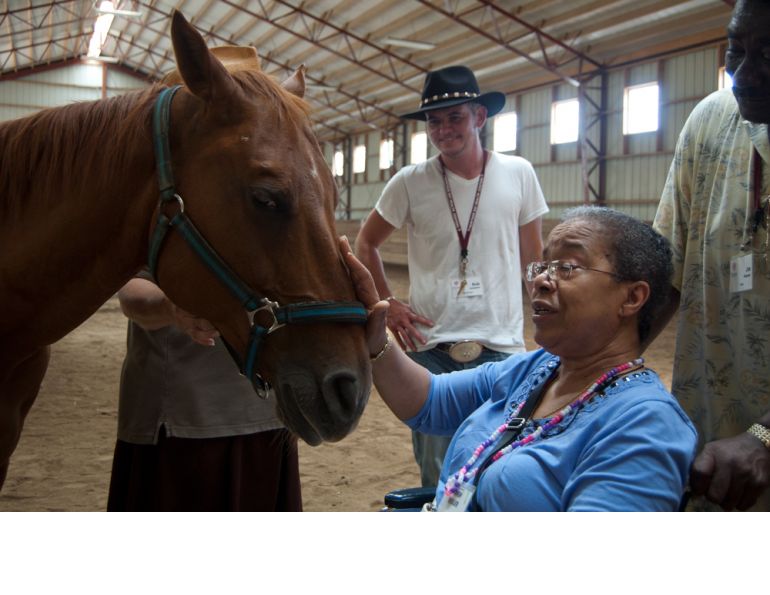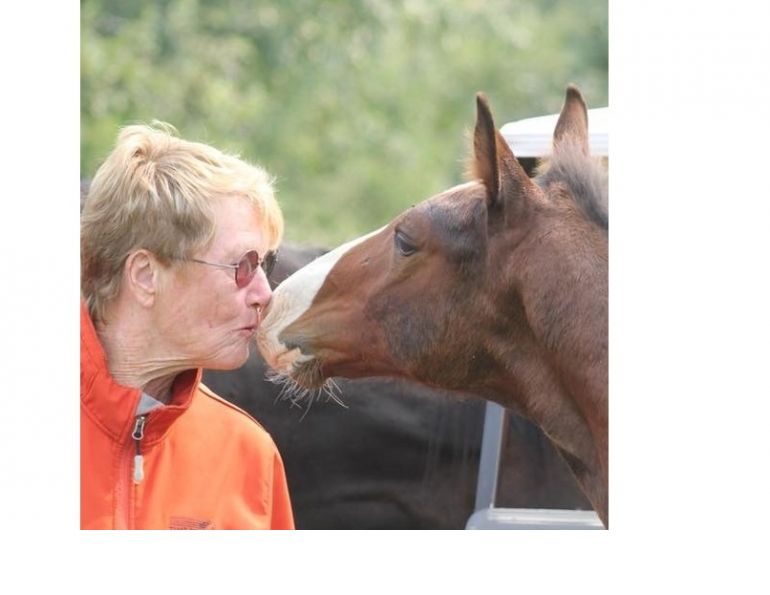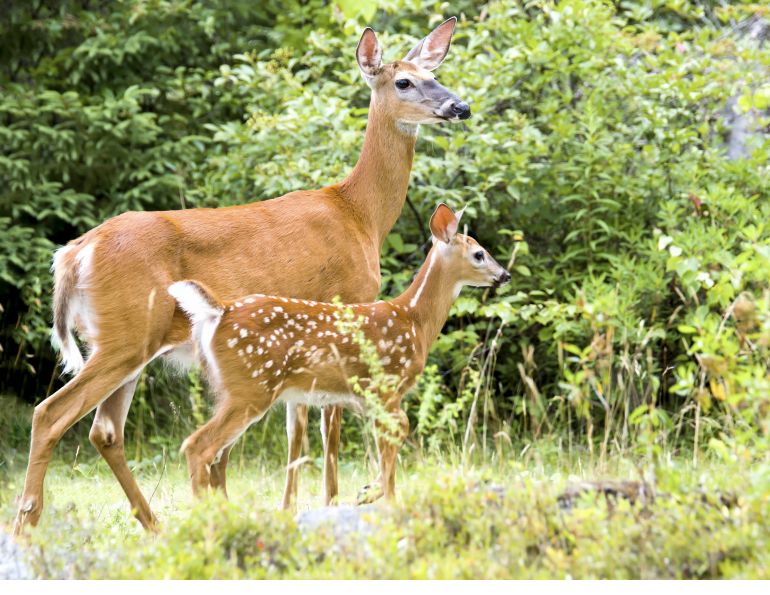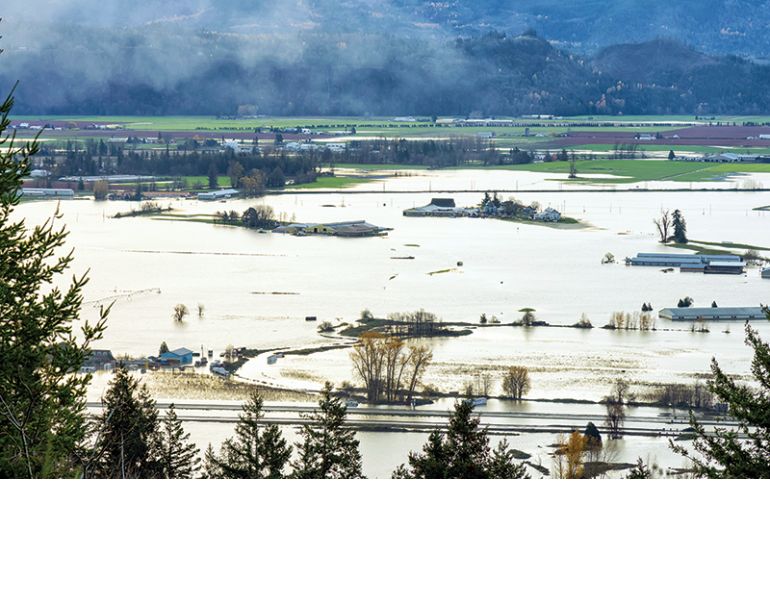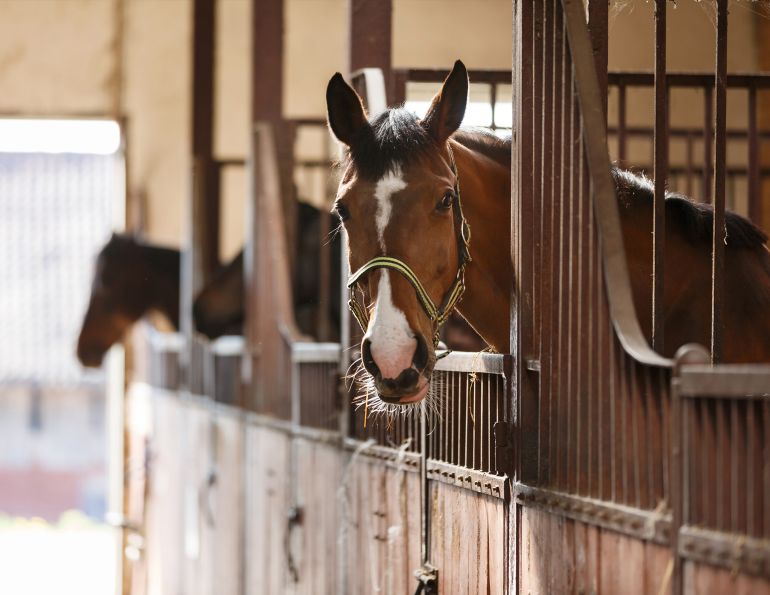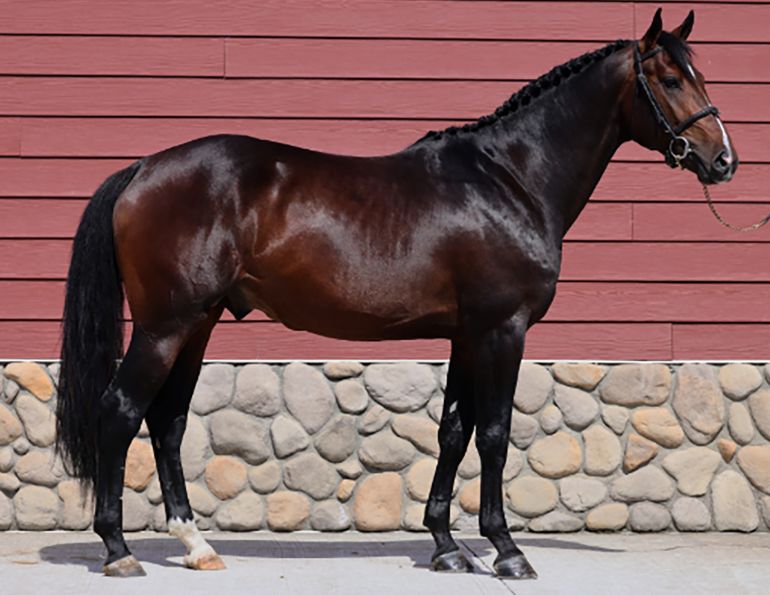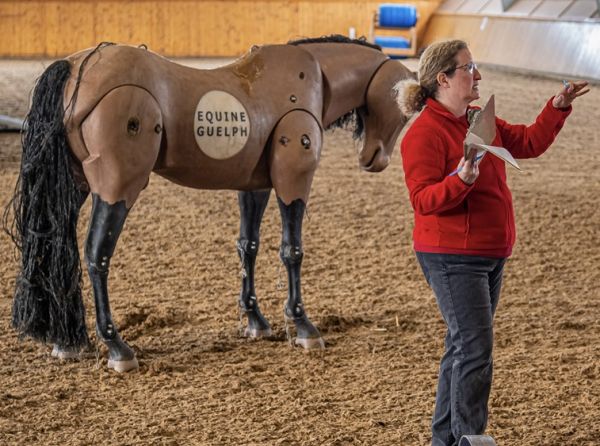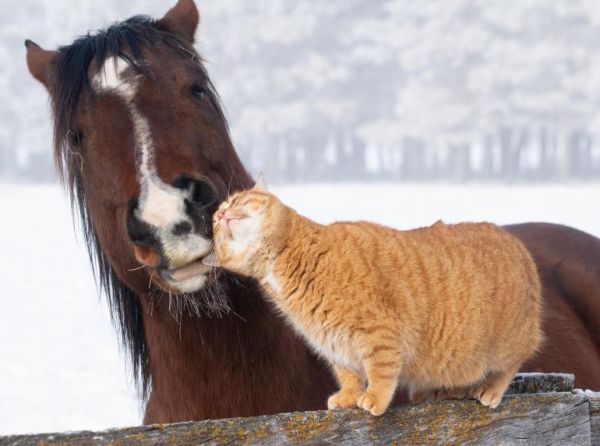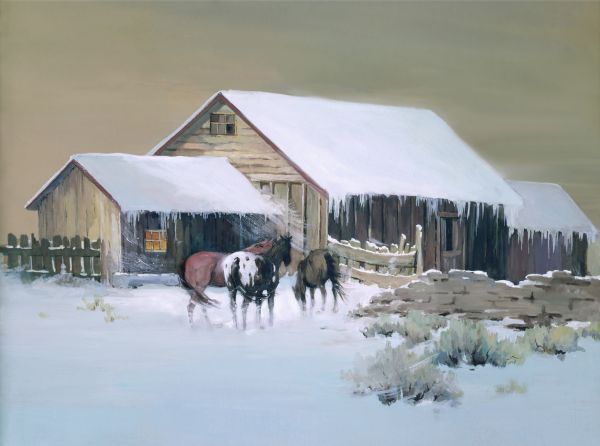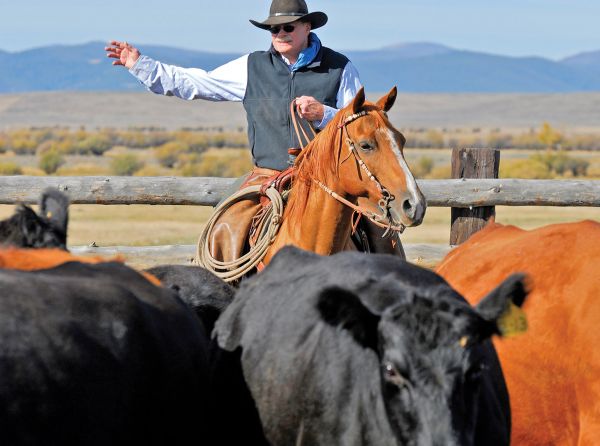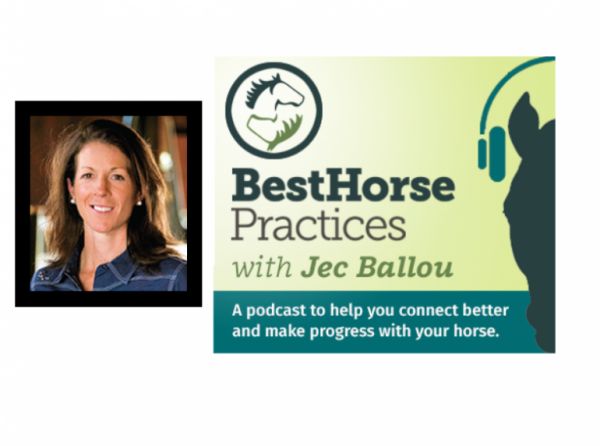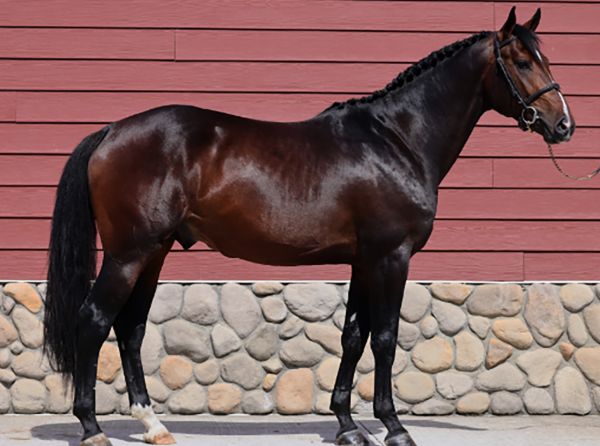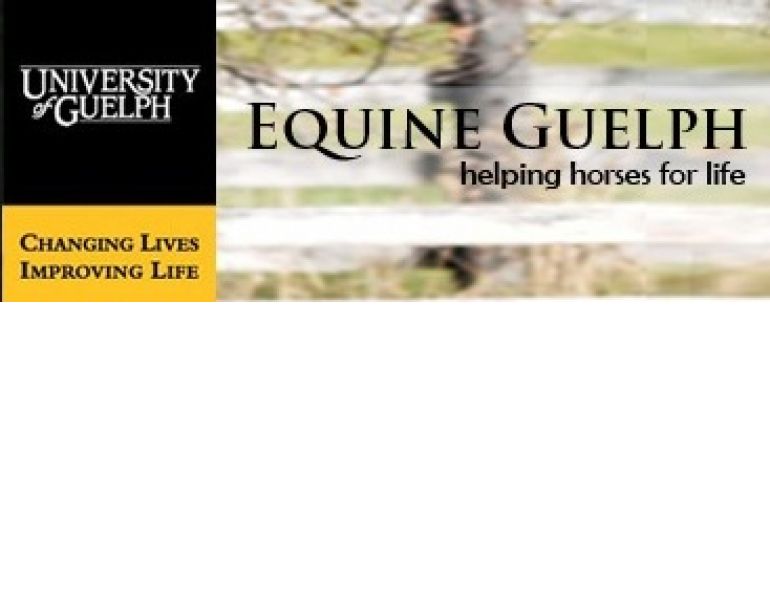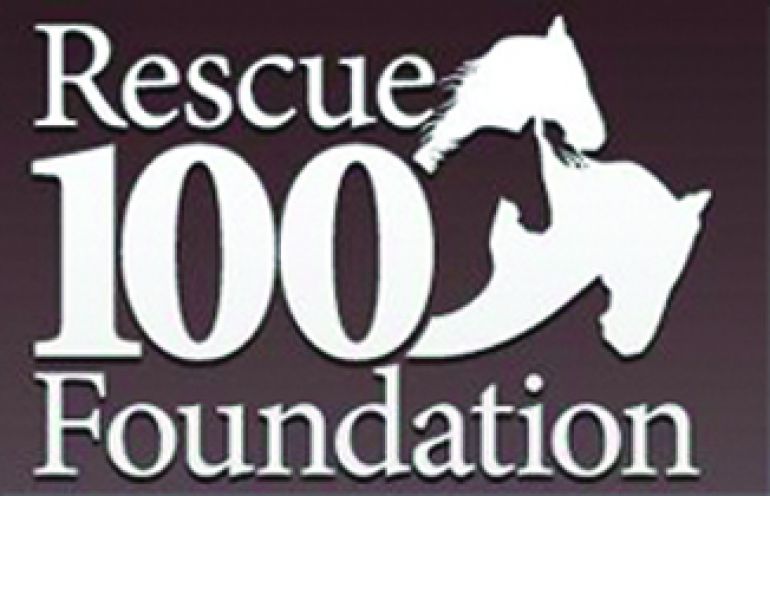By Margaret Evans
November 17, 2019 was a normal day in Canada. With the show season over, riders, coaches, trainers, and barn owners were settling in for some downtime over winter, and anticipating the upcoming holiday season. They had no idea that, half a world away, a 55-year-old resident in Hubei province, China, had fallen sick with a novel coronavirus. New cases rapidly emerged. By March 11, 2020 the World Health Organization had declared the virus, now named COVID-19, a global pandemic.
Impact Spreads Across the Horse Community
As businesses closed, employees by the tens of thousands were laid off and social distancing became the new behavioural norm. The economy was broadsided and the horse industry along with it.
As the gravity of the pandemic rapidly unfolded, Equestrian Canada (EC) and the provincial and territorial sport organizations (PTSOs) recommended on March 20, following advice from all levels of government on the movement of individuals and the declared states of emergency, that “all facilities that host equestrian-related activities, including but not limited to boarding stables and lesson barns, cease public-facing and non-essential activities until greenlit by the aforementioned government authorities.”
With the riding and competition season just beginning to get underway, the pandemic could not have hit the equestrian community at a worse time. Suddenly, barns were either closed or severely restricted to only those individuals directly involved in horse care. Waves of cancellation and postponement announcements began to roll in as events of all sizes were sidelined. Lessons, camps, clinics, conferences, and competitions from local schooling shows to major national and international events were cancelled or postponed, forming a massive list of equine-related events and activities impacted by the pandemic around the globe.
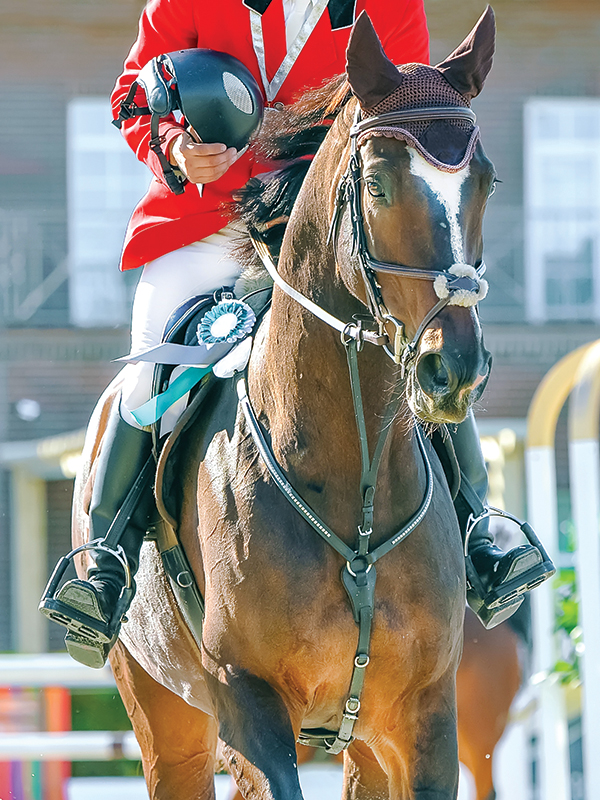
As the impact of the pandemic deepened, equestrian events all over the world were cancelled or postponed. With countries threatening to keep their athletes at home, the 2020 Tokyo Summer Olympics was moved to 2021. Spruce Meadows in Calgary, Alberta, cancelled five show jumping tournaments, including the ‘Masters” scheduled for September 9-13, 2020. Major horse races including The Queen’s Plate and the Kentucky Derby, were postponed. The Calgary Stampede, cancelled for the first time in 100 years, joined many thousands of rodeos and expositions impacted by the pandemic. Photo: Shutterstock/Taylon
With riding sacrificed in order to help flatten the curve, competition organizers are facing a double whammy in terms of timing. “Our competition season is short, as is the amount of time when weather allows for outdoor activity,” says Caroline Soble, Communications Coordinator with Equestrian Canada. “EC recognizes that these early weeks are precious and remains focused on doing our part to encourage the limitation of transmission and the optimization of this downtime so that we can all safely return to sport as soon as possible. The suspension of competition was abrupt, so everyone had to take action within a few short days or weeks to meet recommendations or mandates from government and health authorities.”
Soble says that the level of adaptation needed across the equestrian industry is varied, and it would be difficult to give a clear picture across all areas: Some athletes had to return to Canada from various locations; some businesses have had to lay people off, and work with minimal staff; some have not hired seasonal staff as usual. Lesson barns have been drastically affected as they comply with health authority requirements.
But the costs of caring for horses must still be met, increasing the challenges and stresses being faced by every horse owner, every barn, and every equestrian facility across the country.
Even so, for some horse owners there was initial confusion surrounding who had access to their horses, when, and at what times. And some are able to keep horse care on track with small adjustments.
“I board my horse at a private barn, so luckily for me very little changed,” says April D. Ray, Sales and Social Media Manager at Canadian Horse Journal. “It is easy for us to practice social distancing. I no longer use the cross-ties but tack up in my stall. If anyone else is in the barn at the same time, we keep our distance. We have also been disinfecting touch points on a regular basis. At a time when everything else in my life has been affected by this pandemic, being cut off from friends and family, working from home, and no longer having a social life other than digitally, being able to continue to see my horse and ride is incredibly therapeutic.”
Social distancing has meant foregoing her teaching obligations. After consulting her barn manager, Horse Council BC, and EC, and being informed by her insurance company that they could not confirm coverage if she continued, Ray, an EC certified coach, stopped teaching on March 16. Teaching nights meant busy barns, and the risk of needing medical attention when the health care system was so stressed made the need to cease teaching obvious.
Insurance Questions
One of the big questions that arose is whether riders should continue to ride, even alone. It is a question that immediately raises the bigger issue of risk assessment, especially from an insurance point of view.
“We have received many questions related to insurance like ‘can I ride?’” says Michael King, partner, CapriCMW Insurance Services. “The insurance industry does not have the authority to tell someone that they can or cannot ride. When we have conversations with our clients, we may talk about the risks of riding at this unique time. If you ride and fall off injuring yourself and need hospital treatment, you have done yourself and the medical system no favours. Riders will need to consider the many risks associated with this activity, taking into consideration the safety of themselves and others as recommended or mandated by government and health authorities.”
Since her horse can be a touch dramatic at times, Ray says she is being even more cautious than usual. “I am not taking any risks as I don’t want to end up needing medical care in any shape or form,” she says. “For example, [recently] as I finished chores, the wind had really picked up and I decided it was best not to ride. Previously, I may have thrown caution to the wind, literally, and tacked up, but it just doesn’t seem worth it at this time.”

The risks of riding during a pandemic are unique. If you are injured and need hospital treatment by taking unnecessary risks, you are adding to the stress on the medical system. Photo: Shutterstock/Chelle129
As for barns remaining open, King says that insurance policies can be affected when someone breaks the law. “If a facility has been told by government order to close and they remain open and then present a claim, the insurance company could reserve the right to respond. Coverage could be adversely affected.”
Questions have also arisen about whether a barn insured as a business property has coverage for income losses from a pandemic.
“[They] may have something called business interruption insurance,” says King. “This specialized coverage does not typically respond to losses from epidemic or pandemic situations. More typically, business interruption insurance responds when there is interruption of income arising from damage to an insured building from fire, flood, etc. The current position of most insurers is that ‘disease’ does not create damage to a building and therefore is not a covered peril.”
To help equestrians through this time, provincial associations and EC have extensive and thorough information, updates, and links on their websites, from health to financial resources to equine related information, free webinars, guidance, and answers to insurance questions.
Horse Businesses Struggle, Adapt, Show Their Ingenuity

Photo: Shutterstock/Marie Charouzova
Many barn owners are pulling out all the stops to find innovative ways to cope.
A&T Equestrian in Surrey, BC has 56 horses (five boarders and 51 lesson horses), with over 200 weekly students when they are running normally. “We have unfortunately had to make the tough choice to close our doors to keep our staff and clients safe,” says Kat Naud, owner. “The hardest part is that our horses’ bills are upward of $25,000 a month for their basic expenses. This includes hay, grain, sawdust, farrier work, and staff for feeding, watering, blanketing and stable care. It has also taken away prime time for students and for myself training for the competition season. Many of us had big competition goals for the season that we have been working hard to achieve.”
To help meet some of the costs, Naud and her colleagues have created an “Adopt a Pony” program (www.adoptapony.net).
“What is involved is choosing your pony or horse and ‘virtually’ adopting it,” she says. “We have three options that range from $19.99 to $34.99/month. The basic one gets you updates and pictures of your chosen pony weekly. The second option gives you all the pony updates as well as virtual stable management lessons to keep children learning and engaged. The third option is a combination of the first two as well as virtual riding lessons. Our plan to keep everyone safe is to continue to grow our virtual education program, expanding with different levels of lessons and more videos.”
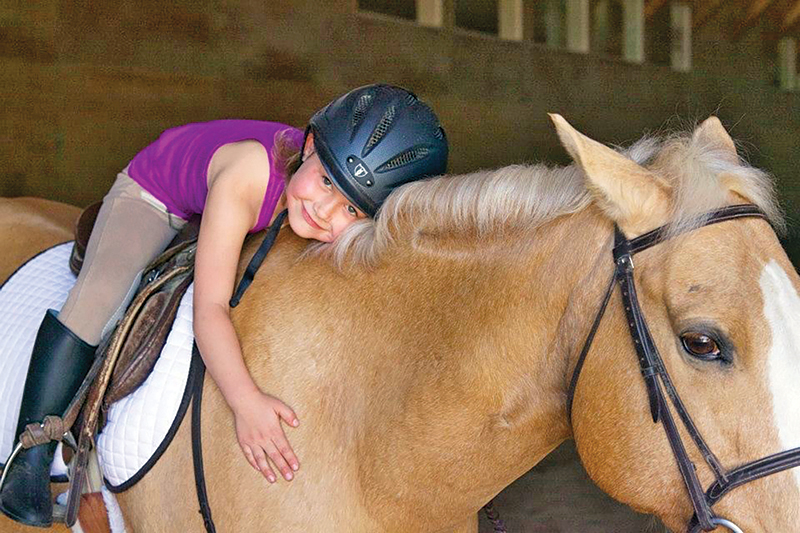
A&T Equestrian is usually a busy place, with 51 lesson horses and 200 riding students every week at their Surrey, BC facility. Now with doors closed until further notice, and basic horse expenses up to $25,000 per month, they have created an “Adopt a Pony” program to help cover some of the costs. The program has three options and offers virtual education, keeping students involved while it keeps everyone safe and offsets some of the horse care costs. Photo: A&T Equestrian
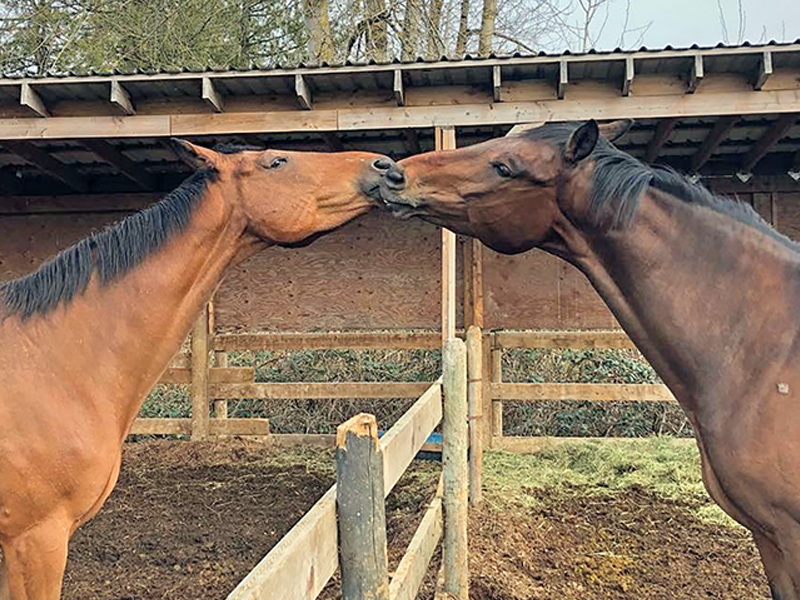
Horses play at A&T Equestrian in Surrey BC. Owner Kat Naud says the pandemic closure has also taken away prime time for training for the competition season. “Many of us had big competition goals for the season we have been working hard to achieve,” she says. Photo: A&T Equestrian
In Ontario, Jen Sweet owns Lions’ Bridge Stables located near Ayr. The facility has 30 horses, most of which are boarders, along with a couple of rescue horses and homebreds.
“We have closed to all boarders,” says Sweet. “Currently the horses are having a mini vacation and we’re taking care of grooming and daily care. My board includes eight lessons and/or training rides per month, and currently we are banking those, and the training rides will be used as we get closer to reopening, to start the horses back slowly so that they are fit, sane, and ready to go for their owners. I work the barn in the mornings and normally ride and teach after that. These days I’m washing legs, grooming horses, and helping my staff to get through the extras while the clients aren’t able to be here.”
For protocols, Sweet says she has one other staff person with her in the barn during the day and two part-time staff on the weekend. They are maintaining social distancing, staying away at any sign of sickness, and hand-washing many times a day.
“My clients have been incredibly supportive, and I am very grateful,” she says. “They have put their trust in me and my staff, and we’re doing our best to take very good care of all of their horses. We send lots of photos and videos and do weekly livestreams on Facebook.”
But more than that, Sweet and her friend, retired veterinarian Mary Bell, are concerned about how the equine industry will manage, in particular those barns that depend on lesson revenue for their income and very survival given the huge overhead to feed and care for a large number of horses. They started a Facebook group to share ideas, supports, and services; highlight gaps in funding; and identify where people are struggling. She also spoke with Ontario Equestrian about a province-wide fundraiser.
“With the help of Jessica Blackwood (Blue Creek Designs), we launched a website (www.helpingtheschoolies.com), where we have posted news releases and government information, in addition to a place to list school horses that can be sponsored at various lesson barns,” said Sweet. “There have been amazing donations from across Ontario, across disciplines, across circuits. We have done a quick survey to gather contact information from lesson barns and that is still collecting information, and we are working on what else we can do to help funding gaps for horse farms that are struggling without the lesson revenue. We are working on a platform to put together farms in need with those that are able to donate product (hay, feed, etc.), and we have put together a few foster arrangements where school horses have gone to live temporarily at other farms to ease the load on the lesson barns. So many people have reached out to help and contribute their skills and knowledge. My goal is to try to ensure that we can help the lesson barns now, so that neither the horses, nor their people end up in a crisis situation.”
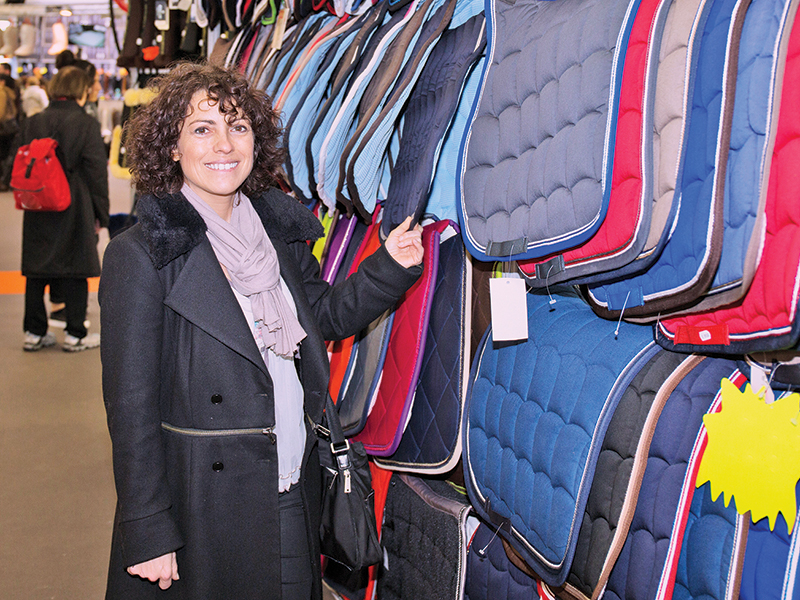
With doors closed and trade shows cancelled just as the riding and competition season was starting, horse industry businesses are coping and adapting, and hoping the shutdown does not last too long. Photo: Shutterstock/Sylv1rob1
Sweet says that over 100 barns have completed her survey on the Helping the Schoolies website, and more than 20 have listed their horses on the sponsorship page. Others are running their own sponsorship programs, and most have received a great deal of support from their clients and other concerned horse people.
“Most of us started at lesson barns,” she says. “We all had our favourite schoolie. Now is the time we can give back and support the programs that feed into every show barn in Canada. It has been incredible to see everyone come together for a common goal. We are in an unprecedented place in society. So much is changing so rapidly. But the horses still need to be fed, the stalls still need to be cleaned, and life in the barn continues. Every farm is structured a little differently, but we all have the same love of our horses.”
In Victoria, BC, Tally-Ho Carriage Tours owner/operator Donna Friedlander has been experiencing the same challenges since she was forced to suspend operations March 19, in compliance with health and safety requirements. The company immediately went to zero income, and had to lay off their entire full-time staff of 10 people, with another 16 people unable to either return to work or gain new employment. Meanwhile, their 18 draft horses have not been working.
“As a seasonal business, we must earn sufficient income over a five-month period to provide top-level care for the horses all year round,” says Friedlander. “Prior to the COVID-19 pandemic, we were in our typical low-point of the year, where horse-care costs had continued without supporting income for six months. We plan and save for this period every year. However, when we had to unexpectedly close our operations in mid-March, our regular income went to zero in the blink of an eye. While our savings will enable us to provide for the horses for a few months, we are now staggering under the sudden, unexpected need to provide feed, farrier, and veterinary services, and shelter for our horses for at least another year with zero income.”
Their draft horses consist of Clydesdales, Shires, Belgians, Percherons, and Suffolk Punch that includes a couple of retired horses and those still in training. Basic care — feed, farrier, veterinary and shelter costs — averages over $10,000/month.
“As a small business, we have worked quickly to reduce our fixed costs so that all available resources can be directed to horse care,” she says. “We are working with our bank to apply for the Canada Emergency Business Account, but this funding will not cover horse care costs for long. We are also working with our bank to secure access to business loans. We are working with our industry associations to ensure governments have recent data and are made aware of the impact COVID-19 is having on both the tourism industry and all entities that rely on public funds to care for animals. We launched a GoFundMe campaign on April 13, 2020, asking the public for assistance in helping us care for the herd (https://www.gofundme.com/f/for-the-love-and-health-of-our-horses).” Results have been exceptional. The GoFundMe campaign raised over $27,000 by April 22 and, in addition, Tally-Ho has received approximately $5,000 in cash and in-kind donations.
“We are tracking all donations received and will ensure 100 percent of the funds are spent on horse care. If we are able to resume operations sooner, we will forward all unused donations to other equine causes in British Columbia. We have also received a number of offers to help on the farm. Due to physical distancing requirements and our need to maintain our own family’s health and safety, we are not able to accept these generous offers at this time.”
All across the industry, horse people are working hard to navigate these uncertain economic times while keeping their families, employees, and customers safe. Veterinarians and farriers have developed the special protocols necessary to care for animals needing essential and emergency services. Tack stores with online ordering capabilities are offering curbside pickup in addition to the usual shipping. Some horse sales have moved online, and trainers are developing videos for their website audiences. There is a lot of uncertainty in the horse racing industry, but some tracks will start holding races without fans in May.
Cancellation of expositions has been a huge blow for many businesses, especially those who had planned to attend such big events as the Can-Am All Breed Equine Expo in Markham, Ontario, or The Mane Event in Red Deer, Alberta, both planned for April. Many vendors purchased additional stock in preparation for these shows, and are now faced with paying for that stock while being shut down and unable to sell it. Can-Am has refunded vendors their booth fees and is encouraging visitors to their Facebook page to shop online at their vendors’ websites. A Mane Event Facebook group page has been created for vendors where they can post their products and services online, and a Mane Event press release says the virtual event will be publicized through social media and email, asking visitors to support the vendors.
As they watch the bills pile up, barn and stable operators are extremely concerned about what will happen to their horses if the shutdown lasts into the summer months and their businesses fail. Across Canada there are tens of thousands of horses used for camps, riding lessons, therapeutic riding programs, and other activities. These animals are the frontline workers of the horse industry, but for them there is no employment insurance, no emergency assistance. For those at the grassroots level of the horse industry, federal help and an end to the shutdowns can’t come too soon.
“As someone who is involved in social media, I have witnessed a lot of toxicity in our community regarding what individuals and barns are doing at this time,” says Ray. “Many have skewered people for staying open, continuing to teach, or not taking certain precautions. I respect everyone’s right to do what is best for them and their barn, while also being socially responsible. I have seen many barns schedule times for owners to come to socially distance, or even some shutting down completely. It is such a challenging time for the horse industry, and we are all in this together. The industry is unique in that horses need care no matter what and, without lessons or training to support that, it is a trying time for many. I know all horse owners want to be able to uphold a standard of care for our horses, but doing so is very costly. I worry that many won’t be able to shoulder this long-term and that the horses will suffer.”
See: Equestrian Canada Announces Return to Business Operations Framework
A New Perspective

As the quarantine imposes stress and anxiety on everyone, horse lovers are acutely missing the comfort and pure joy of connecting with their equine friends. Photo: iStock/RelaxFoto.de
“One thing I have noticed is that people are connecting with their horses in a different way,” says Ray. “Take away horse shows, clinics, and any goals that were on our plates and I am seeing many going trail riding, taking the pressure off and maybe even having more fun. I am reminded of the pure joy I had when I was a kid, just to see a horse, and think many of us are feeling that again and truly appreciating our barn time.”
“I am fortunate to have my horses at my farm in the rural Ottawa Valley,” says Akaash Maharaj, former CEO of Equestrian Canada and current CEO of the Mosaic Institute, Toronto. “As a result, for me, working from home means spending more time with my horses, rather than less. I have been riding on my property and avoiding public trails to respect physical distancing recommendations. My heart goes out to the many Canadian horse people who are in the terribly unhappy position of being indefinitely separated from their horses.
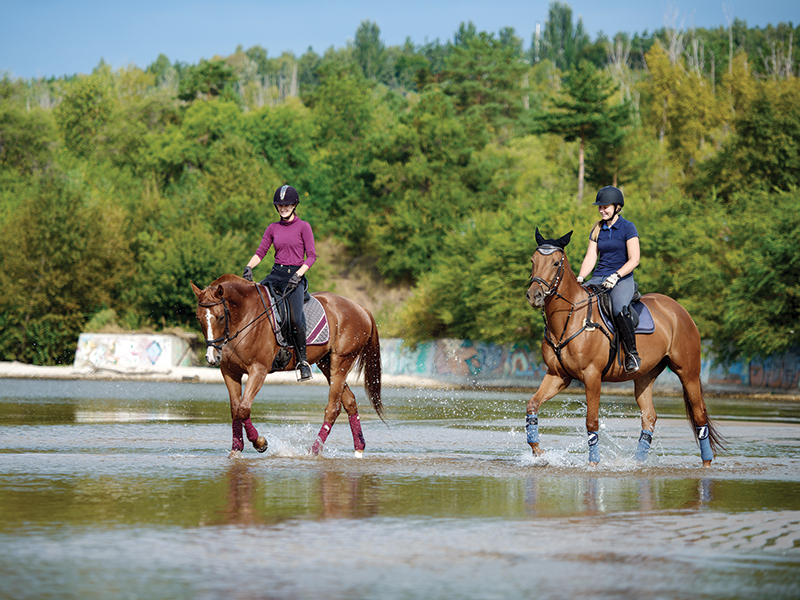
Without horse shows to prepare for, more people are trail riding and just enjoying their horses. Photo: Shutterstock/Cool photo
“There is no denying that the general quarantine is imposing terrible stresses on many Canadians — fears for their own health and that of their friends and families; social disruption; emotional isolation; severe economic anxieties. For most horse people, these are precisely the circumstances when we would most want to take comfort in our horses. I do not think anyone should underestimate the psychological turmoil many of our fellow horse people are feeling by being been kept from their horses during the quarantine.”
Referencing the National Farm Animal Care Council Code of Practice for the Care and Handling of Equines, Maharaj says it seems reasonable that boarders and horse owners should be able to provide necessary care for their horses with exercising such as in-hand walking, riding, lunging and hand grazing. This would not include lessons, recreational riding or other non-essential activities.
“Some barns have created systems of rotas, where horse owners must sign-up in advance to visit their horses at rationed slots throughout the day to provide their horses with necessary care,” says Maharaj. “A rota limits the number of people on the barn premises at any one time, thus making inadvertent encounters between people less likely, while still allowing horse owners peace of mind. Rota slots can also come with requirements that horse owners take the shortest path to their horses, not interact with other people, clean and disinfect surfaces and equipment they use, and leave immediately when their time expires. In my view, the best and most effective forms of social distancing are ones that people will actually follow and maintain throughout a potentially prolonged crisis. That means implementing strategies and policies that are balanced, reasonable, and feasible.”
Equestrian Canada Survey
As the significance of the COVID-19 pandemic broadsided the horse industry, EC launched a survey from March 26 to April 6 to gather data from barns and facilities so that EC, PTSOs, and their affiliate associations could present a current and fact-based picture of the industry’s needs to government bodies and financial institutions. The data would be essential when applying for programs moving forward.
The survey represented 10,222 affected equines with an average of 26 equines on each premise. The owners’ average percentage of business income derived from equestrian activities was 73 percent, and the projected income loss to equestrian farms and facilities due to COVID-19 was 65 to 100 percent.
The EC website also carries the following appeal:
“Urgent federal support is needed for Canada’s working horses!
Due to the coronavirus (COVID-19) pandemic, equine farms and equestrian facilities across Canada are facing unprecedented financial instability. Since all public-facing activities have stopped, business owners are unable to pay for animal care as incomes have largely disappeared.
Estimates based on EC’s recent national survey indicate there were 46,501 horses and 8,455 equine facilities in Canada with one month or less of financial reserves and supplies as of April 6, 2020. Without urgent government support, many equine owners are now or will soon be facing the horrendous decision to offload perfectly healthy, capable animals into a marketplace in which supply far exceeds demand.
EC is working urgently with the federal government to set up an emergency relief fund to prevent this imminent threat, but we need your help to make it happen.”
The EC website directs visitors to contact their Member of Parliament in support of EC’s urgent appeal, as well as their PTSOs.
EC was hoping for a minimum of 1,000 responses but received 640 in the ten-day survey. Whether the information is sufficient to give a complete profile of the multi-faceted industry remains to be seen.
“It appears that EC has found itself in the midst of this crisis with very little information about the Canadian horse industry and horse facilities,” says Maharaj. “The federation is trying to make up for a significant deficit of information, during a national emergency, at a time when staff and volunteers cannot collaborate in person. Effective disaster responses must be planned in advance, not developed from scratch in the middle of a disaster.”
Despite the shortcomings, the survey data is being applied to several initiatives.
“It has been used to create a report sent to Sport Canada, illustrating the impacts of COVID-19 on Canadian equestrian sport operations,” says Soble. “[It has been included] in letters to the Minister of Canadian Heritage and the Minister of Agriculture, to convey the urgency of the situation and need for timely solutions. And [it has been] used by the Agriculture and Agri-Food Canada equine sector working group in their development of a fact-based proposal for financial relief options. The survey data is useful in illustrating the depth and breadth of COVID-19’s impacts on the equine/equestrian sector, as well as providing an indication of the size and necessary elements of any relief packages that may be made available.”
Soble says that the working group will use data from EC’s survey that gathered business profiles from across Canada. Those results are being analyzed by a third-party consultant. Along with additional external resources that give a bigger picture of the industry, the data will illustrate the sector-specific need for relevant business risk management resources and sustainability strategies.
“The data will also highlight current limits on legislation that restrict equine/equestrian business owners from accessing standard resources at the provincial and federal levels,” says Soble. “These limitations are based on a large misunderstanding of the sector, its diversity, and the realities of commercial equine farming and commercial equestrian business. For example, many equine/equestrian businesses are excluded from claiming farm income based on the definition of ‘farming’ in subsection 248(1) of the Income Tax Act, effectively eliminating those businesses from consideration for many vital resources such as farm registration numbers, AAFC funding streams, and AAFC business risk management programs.”
See Equine Canada COVID-19 Survey Infographic
See: Canada's Working Horses Excluded from COVID-19 Federal Funding
Return to Competition
As much as everyone is coping with the current restrictions, many are looking ahead to what a return to normal activity might look like.
“EC has brought together a panel that includes top veterinarians and industry leaders to look at the steps for return to competition,” says Soble. “The working group is looking into areas such as horse fitness, fitness evaluation metrics, and current research on training and development. The aim is to develop a decision tree that will aid in determining an equine’s current level of fitness, as well as key physical indicators that can be used to determine an equine’s readiness to return to competition.”
Soble says that the working group will be making its recommendations on the resources needed. Once submitted to EC, they will be reviewed in partnership with the PTSOs, horse wellness people, and coaching staff to create the resources to support a return to sport. Once done, the resources will be circulated publicly to provide support to the community and a framework for the safe return to competition. It will need to be flexible to allow for differences across geographical regions and to respect varied directives from federal, provincial and municipal authorities.
“As clients face job loss, there will be changes,” says Sweet. “The show season will be dramatically different. It will be a different normal for some time to come.”
Industry Impact Going Forward
King sees not only new challenges coming in the industry, but opportunities too if those running barns engage with their contemporaries in the horse industry as a collective with common goals and aspirations. But once the pandemic is over, the road ahead could be rocky.
“I think we can all see a contraction in the industry coming,” says King. “I think those who do survive will be stronger, smarter, better for it, and I am hopeful that the horse community will come together to recognize that we are actually a single industry with common needs, common interests, and common desires to grow and prosper. The days of silo thinking are over — or should be.”
King says that, among other issues, the industry needs to improve on how it is structured and how it views employees who, he says, are often treated as arm’s length contractors with little or no protection.
“Employees should be paid properly, and employers should contribute on their behalf for employment insurance so that, if something comes up again that interrupts their ability to work, they are protected,” he said. “They are part of the working community of Canada. If the horse industry stands back to see the bigger picture, they might actually get the positive attention and supports needed in a crisis (like COVID-19), from government, that they desire.”
Given that the horse industry crosses many boundaries from work to sport to culture to recreation, it is set uniquely apart. But the operation of the industry — hiring employees, purchasing and caring for equine stock, interacting with government as legitimate business enterprises, and providing profitable services — are all grounded in the hallmarks of any business or corporation. And all individual barns, facilities, riders, trainers, and coaches have the benefit of their provincial equestrian associations, providing valuable information and resources to help them and the communities they serve.
“I admit being frustrated by people who think these hard-working membership organizations are only about going to horse shows,” says King. “They are so much more than that. They have the resources, desire, and people who can help [in all facets of the industry].”
Staff at all the provincial equestrian associations as well as Equestrian Canada are working harder than ever to collect and amass information on the evolving COVID-19 situation. Weekly virtual meetings are being held between the PTSOs and EC, so that so that everyone is up-to-date on the latest developments, which can then be placed on websites and shared with members.
At Equine Guelph, a leader in equine education and research in Canada, a number of valuable online courses are offered.
“The Sickness Prevention course is a short, online course that gives people the knowledge and the tools to develop and practice biosecurity on their own property, to reduce the risk of disease spread in their barns,” says Gayle Ecker, director. “The course has Dr. Susan Raymond, and guest speaker is Dr. Alison Moore. The course filled to capacity in about 24 hours so sadly we are not able to take in more people. It will stay open until May 31st to let people go back in and review, listen to videos again, download resources, etc. In response to current events, we pulled this course forward to offer it as a free course.”
EC has also accelerated the timelines on the development of their online training modules and other digital resources.
“Resources and training will be delivered through a new online learning campus that will provide a one-stop shop to access EC online learning and improved links to third party courses,” said Soble. “These modules will be in the interest of all disciplines to help advance their coaching certification portfolio.”
In addition, EC is supporting Cheval Quebec’s adherence to the mandates enacted by their provincial authorities.
“Cheval Quebec organized a successful webinar as an extension of the English version EC had [previously] organized,” she said. “Cheval Quebec added a few discussion topics for facility owners to access information related to restrictions Quebec has put in place. EC will continue to provide supporting materials and resources in both languages for Cheval Quebec’s use.”
Meanwhile, everyone in the industry is doing their part to cope with the restrictions for health and safety.
“One day at a time, as a community, I believe we can get through this,” says Sweet. “No one is in this alone, and I think that has also been a big part of this group, ensuring that everyone knows we’re all in it together. The need is huge. Unfortunately, the profit margins in this industry are not high, and the expenses continue regardless of the lack of income. We will need to cut expenses, work with government to obtain funding that is available, but I think it will be essential to continue with fundraising efforts to fill the inevitable gaps. Show season will be very delayed and shortened, and that will impact revenues for many farms. And for the lesson barns, the summer camp situation may save things or be the final straw, depending on whether or not they are able to run. It is going to be a difficult year for so many. I hope that the Helping the Schoolies Initiative will help make it a little easier.”
She believes it is critically important to understand that things can change rapidly, everyone is in a state of learning and there can be confusion.
“The horse world can be very insular, and when things like this happen, we must look outside of our world and consider the community and global repercussions of our actions. Ultimately, the safety of our clients, our communities, our staff, and ourselves is critical. Without our health, we cannot continue to do what we do and ensure the best care of our (and your) horses. None of this has been easy and there is no template to follow.”
Ray expresses a thought that is on everyone’s mind. “I don’t think anyone expected this to continue as long as it has with no end in sight. Now is the time to reassess and come up with a plan to move forward. We are all just trying to find our way. I think although everyone is doing their best, some of the information from the get-go was a little unclear, both from the insurance companies and the provincial and national associations. [That was] making it hard to know what the right thing to do was in this trying time.”
Friedlander appreciates how much people are challenged, yet still care about their horses.
“Those who haven’t been able to financially contribute have sent amazing letters of support, words of encouragement, and general high hopes to see the Tally-Ho horses in Victoria again soon,” she says. “The horses have some major fans, and we are incredibly honoured and grateful to receive such kindness! COVID-19 has had a real, immediate impact on our small business, and our family, yet our community is strong, and we will all get through this by helping each other. Our hearts are with everyone during this difficult time.”
As this issue goes to press, Ray was told she can resume some teaching, providing private lessons only and no more than two back-to-back. “I am beyond excited to be able to teach again, and know my students are so excited to get back to lessons.
“Horses bring us all sanity and comfort even in normal times, and we are currently in anything but that,” says Ray. “Stay safe out there friends, and make good choices. This isn’t about you, or me, it’s about everyone in our community, country, and the world right now.”
Main Photo: Shutterstock/Irina Mos



